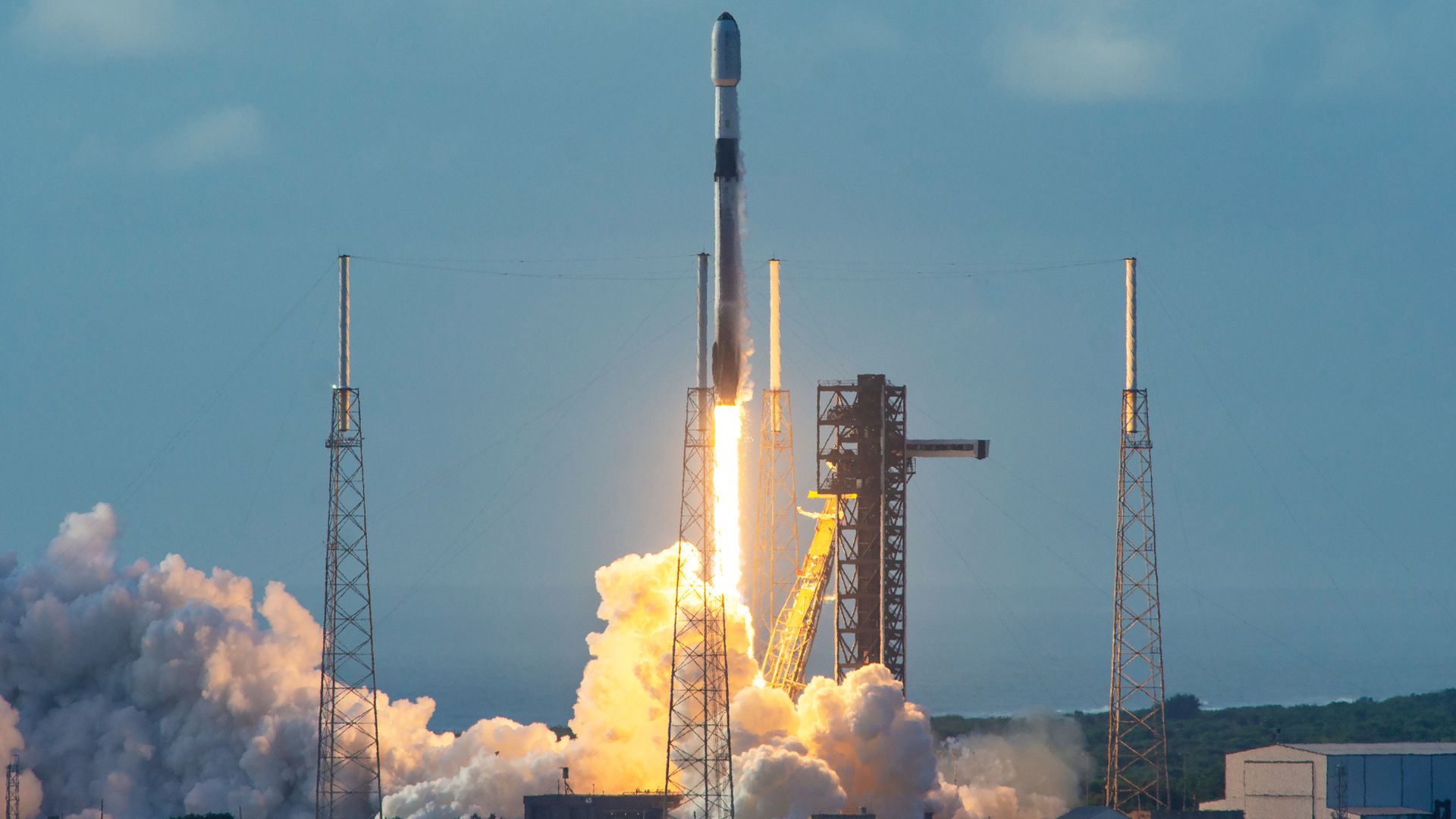Cape Canaveral, FL — SpaceX is preparing for a landmark Falcon 9 launch today, aiming to achieve two major milestones in a single mission. The company plans to deploy 28 Starlink broadband satellites from Florida’s Cape Canaveral Space Force Station during a four-hour window opening at 10:52 a.m. EDT (1452 GMT).
With nearly 10,000 Starlink satellites already in orbit, today’s launch will push the total past the 10,000 mark. Additionally, the mission will mark a record-breaking 31st flight for the Falcon 9 booster known as 1067, a testament to the growing reliability of SpaceX’s reusable rocket technology.
Astrophysicist and satellite tracker Jonathan McDowell reports that SpaceX has launched 9,988 Starlink satellites so far. Most of them remain operational, with 8,610 actively providing broadband service around the globe. The remaining satellites have been intentionally deorbited, burning up harmlessly in Earth’s atmosphere after fulfilling their roughly five-year operational lifespan.
SpaceX will stream today’s launch live on its website and X account, beginning approximately five minutes before liftoff, offering viewers a chance to witness history in the making. If everything goes as planned, Booster 1067 will return to Earth roughly 8.5 minutes after liftoff, landing on the company’s autonomous drone ship, A Shortfall of Gravitas, stationed in the Atlantic Ocean.
The Falcon 9’s upper stage will continue the journey, carrying the 28 Starlink satellites into low Earth orbit (LEO) and deploying them about 64 minutes after launch. This mission highlights SpaceX’s ongoing commitment to expanding the Starlink megaconstellation, which now serves millions of customers worldwide.
SpaceX first tested the Starlink concept in February 2018 with two prototype satellites. Fifteen months later, the company began full-scale construction of the network. The first public beta of Starlink service launched in October 2020, followed by a commercial rollout in 2021. Since then, the constellation has grown at an unprecedented pace, with 89 missions completed in 2024 alone. The company has already surpassed that number in 2025.
Looking ahead, SpaceX has received approval to launch up to 12,000 Starlink satellites, with plans that could eventually see the constellation expand to more than 30,000 spacecraft. This rapid deployment is part of SpaceX’s broader strategy to provide global broadband coverage and strengthen its technological footprint in space.
Reusability remains a central element of SpaceX’s mission to reduce the cost of spaceflight. Falcon 9 and its heavier counterpart, Falcon Heavy, feature reusable first stages, while the upper stages remain expendable. The company is also developing Starship, a fully reusable rocket designed to carry humans and cargo to Mars, which could revolutionize space travel and interplanetary settlement.
Today’s launch underscores SpaceX’s dual focus on efficiency and ambition. As Booster 1067 embarks on its record-setting 31st flight, the mission serves as both a milestone in commercial spaceflight and a step toward a future in which humanity’s presence in orbit—and beyond—continues to expand.

